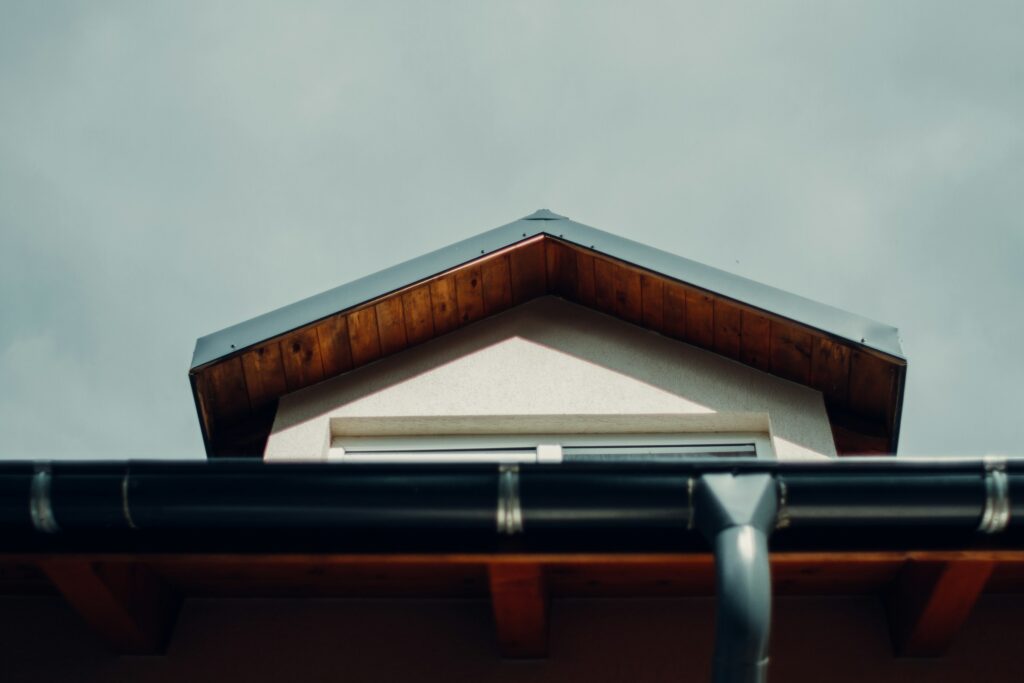Practical Tips for Maintaining a Strong, Water-Damage-Free Home
Gutters might not be the most glamorous part of your home’s exterior, but they perform a critical role: channeling water away from your foundation, siding, and landscaping. When they stop doing their job—whether due to age, damage, or simple wear and tear—problems can escalate quickly. You might notice water pooling near your home’s base or see mold creeping up exterior walls. Left unattended, these issues can compromise not just your curb appeal but also your home’s structural integrity.
If you’re reading this because your gutters are sagging, leaking, or simply looking worse for wear, you’re in the right place. We’ll explore the most telling signs that gutter replacement is on the horizon, outline what to expect during the process, and help you make sense of cost factors, materials, and best practices. By the end, you’ll be better equipped to protect your home from water damage—and maybe even upgrade your gutter system for less hassle down the road.
Why Gutters Matter More Than You Think
You might wonder if gutters are truly essential. After all, water runs off your roof regardless, right? The difference is where that water ends up. Properly functioning gutters collect rainwater (and melting snow) as it flows off your roof, directing it safely away from your home’s foundation and landscaping. Without them, you risk the following:
- Foundation Issues: Water pooling around your home can seep into the basement or crawl space, leading to cracks or shifting in the foundation over time.
- Damaged Siding and Exterior Paint: Constant water overflow can discolor or peel paint and lead to mold growth on siding.
- Soil Erosion: If water keeps splashing down near the same spots, you might notice your landscaping eroding or turning into a muddy mess.
Replacing gutters isn’t just a cosmetic fix; it’s a functional one. Done well, it wards off expensive repairs and keeps the rest of your property looking its best.
Key Indicators That It’s Time for New Gutters
1. Persistent Leaks or Holes
Occasional pinholes or small leaks can sometimes be patched or sealed. But if you’re spotting significant cracks, rusted-through sections, or repeated leaks in multiple areas, patchwork solutions usually just delay the inevitable. When you can’t go more than a season or two without new leaks cropping up, it’s time to think about a full replacement.
2. Sagging or Pulling Away
Gutters that consistently dip or pull away from your roofline often signal severe wear, rotted fascia boards, or insufficient support. Reinserting or adding new hangers might help temporarily, but if the gutters are warped, they won’t hold their shape for long. Water could end up pooling in the low spots, accelerating damage.
3. Peeling Paint or Rust Stains
Excess water from failing gutters can harm your home’s exterior paint, causing it to bubble, peel, or develop rust-colored streaks. If you catch this early, sometimes a little sanding and repainting can help. However, if the damage to paint or siding reappears even after fixes, you’re probably dealing with chronic gutter problems.
4. Flooding Near the Foundation
One of the most obvious red flags is water collecting around your home’s base after a moderate or heavy rain. Even if you don’t see cracks or basement leaks yet, ongoing exposure to large amounts of water near the foundation can lead to bigger structural issues down the line.
5. Rot or Mold Along Roof Edges
Check your soffit and fascia for signs of rot, mold, or mildew. Gutters that overflow routinely or leak at the seams can soak the wooden areas beneath them. If that wood stays damp, it eventually rots, jeopardizing not just your gutters but the edge of your roofline as well.
For a quick diagnostic of common gutter issues, Bob Vila’s Guide to Gutter Maintenance offers photos and step-by-step tips to help you identify potential trouble spots before they escalate.
What Happens During Gutter Replacement
Initial Inspection and Measurements
The process starts with a thorough look at your existing system. A reliable contractor will measure your roofline, check for underlying wood damage, and note any unusual angles or drainage points. If your home has unique architectural features—like curved rooflines or multiple levels—this is the time for them to plan how the new gutters will be fitted.
Removal of Old Gutters
Next comes taking down the old gutters. If they’re sectional (pieces joined together), the contractor usually disassembles them in segments. Seamless gutters, on the other hand, are removed in long strips. It can be a bit noisy, but this step is straightforward.
Addressing Underlying Issues
With the old gutters gone, it’s easier to spot damage to fascia boards, soffit, or even the roof’s edge. If these elements show signs of rot or cracking, repairs should happen before new gutters go up. Installing brand-new gutters on a decaying structure simply shifts the problem down the road.
Installation of New Gutters
After repairs, the new gutters come into play. If you opt for seamless gutters (made on-site with a specialized machine), the installer will shape each gutter segment to the exact length needed, minimizing seams where leaks can form. For sectional gutters, each piece is trimmed and joined carefully, often sealed with specialized compounds to prevent leaks.
Downspouts and Extensions
Downspouts direct water from the gutters to the ground. In many cases, installing a slight extension or splash block at the base helps channel water further away from your foundation. You can also consider underground drain pipes if you want a cleaner look around your home.
Pro Tip: If you’re in a region with high rainfall, talk to your installer about gutter guards or screens. They keep leaves and debris out, reducing your cleaning chores and the risk of clogged downspouts.
Popular Gutter Materials and Their Benefits
Choosing the right material depends on your budget, home style, and local climate. Some of the most common options include:
- Aluminum
Often the go-to material thanks to its balance of affordability, durability, and variety of color choices. It won’t rust, though it can dent if hit by branches or ladders. - Vinyl
Typically the cheapest, but also the least durable. Good for mild climates and smaller budgets; might crack in colder regions over time. - Steel
Offers robust strength and resists warping better than aluminum. However, steel is prone to rust if not well-coated or regularly maintained. - Copper
A high-end choice that develops a classic patina over the years. Copper gutters can last decades but come with a premium price tag. - Zinc
Less common in residential settings but very durable, with a patina that changes color over time. Typically more expensive than standard metals.
Lowe’s Gutter Buying Guide provides an overview of gutter materials, shapes, and tips for matching them to your home’s exterior.
Costs, Timelines, and Permits
Cost Factors
Gutter replacement pricing typically hinges on your home’s size, the chosen material, and whether you need additional structural repairs (like replacing rotted fascia). Custom or seamless gutters cost more upfront, but they often come with fewer leak risks. Plan for extra charges if you have multiple stories or if the contractor has to maneuver around obstacles like dormers or intricate roof angles.
Project Timelines
The actual gutter replacement often wraps up within a day or two for an average home. Extra time may be needed if your house is very large, has complicated architecture, or if you need substantial soffit or fascia repairs. Weather can also affect scheduling; heavy rain or snow may delay the job for obvious reasons.
Permits
Many communities don’t require a permit just to replace gutters. However, if your home is in a historic district or if you’re adding new features—like gutter guard systems that alter exterior appearance—local regulations might kick in. Always double-check with your municipality or homeowner’s association to avoid violations.
Dealing with Old Gutter Debris and Disposal
Once your gutters are removed, you’re left with a fair amount of metal or vinyl waste. Most reputable contractors include disposal as part of their quote. If they don’t, ask if there’s an extra fee. Depending on your local recycling facilities, aluminum or steel gutters can be recycled, which is an eco-friendly way to discard them. Vinyl gutters usually head to the landfill unless your area recycles PVC specifically.
If you prefer a DIY approach to removal, Family Handyman’s Gutter Guide offers advice on how to do it safely, though it’s generally more convenient to let professionals handle it.
Common Pitfalls and How to Avoid Them
1. Overlooking Fascia Damage
It’s tempting to save money by keeping questionable fascia boards in place. But if they’re rotten, your new gutters won’t stay secure for long. Deal with structural issues while everything’s exposed.
2. Settling for Poor Installation
Improper slope or spacing can lead to standing water, leaks, and early rust. Make sure your contractor is experienced, and don’t hesitate to ask about references or certifications.
3. Ignoring Gutter Guards
In areas with lots of falling leaves or seeds, gutter guards can be a lifesaver. If you skip them, be prepared for frequent climbing on ladders to clear blockages—especially during autumn.
4. Skimping on Downspouts
Installing too few downspouts, or placing them poorly, results in overflow or water pooling in inconvenient locations. If in doubt, add an extra downspout or ensure the existing ones are well-positioned to handle heavy rainfall.
Maintenance After Replacement
A fresh set of gutters is a great start, but regular upkeep keeps them functional far longer. Basic care includes checking for debris buildup and ensuring downspouts remain unclogged. After major storms, do a quick visual inspection: look for any loose sections or sagging areas. If something seems off, tackle it quickly rather than letting a small issue snowball into bigger damage.
Some modern gutters come with built-in gutter guards or advanced coatings to repel debris and reduce algae growth. While these features can raise your initial costs, they often pay for themselves by slashing maintenance time. For a detailed breakdown of post-installation care, see HGTV’s Gutter Maintenance Tips, which covers everything from seasonal checkups to cleaning methods.
Investing in a Stronger, Safer Home
Gutter replacement might not be the most exciting renovation, but its impact on your home’s well-being is undeniable. When gutters function properly, they channel water where it belongs—away from your foundation and landscaping—while preserving your siding, fascia, and interior spaces. If you’ve been wrestling with leaks, sagging sections, or standing water near the foundation, new gutters can offer peace of mind for years to come.
Remember, the process usually kicks off with a thorough inspection. Once the old system is removed, you’ll want to address any hidden damage, then install fresh gutters that fit your roofline precisely. Whether you opt for seamless aluminum, durable steel, or the timeless look of copper, make sure you hire an experienced contractor who appreciates the nuances of slope, support, and drainage.
By combining quality materials with proper gutter installation and routine maintenance, you’ll keep water at bay, protect your home’s structural integrity, and potentially boost your curb appeal. It’s a worthwhile investment that pays off every time it rains.




